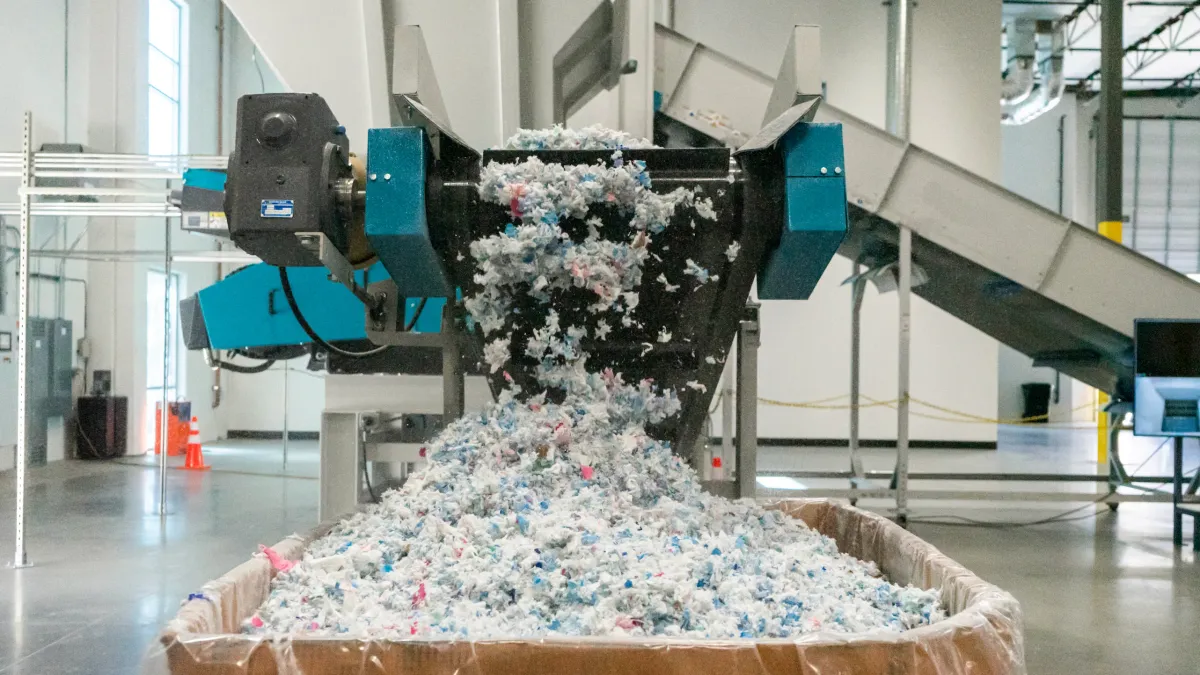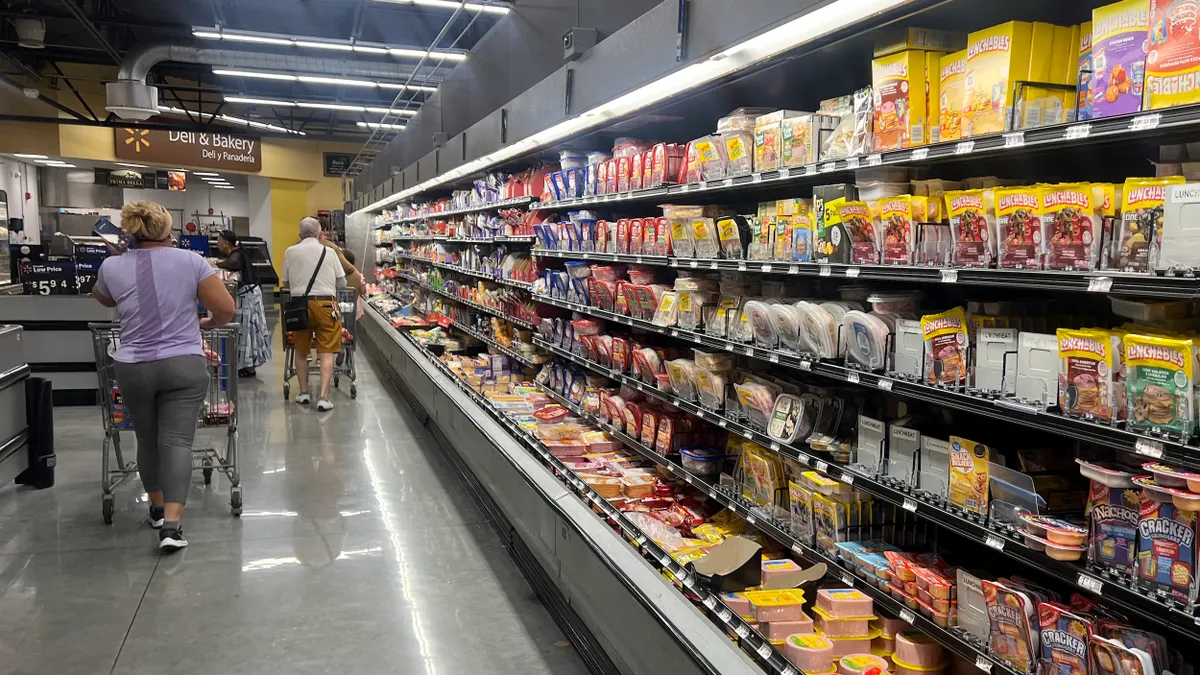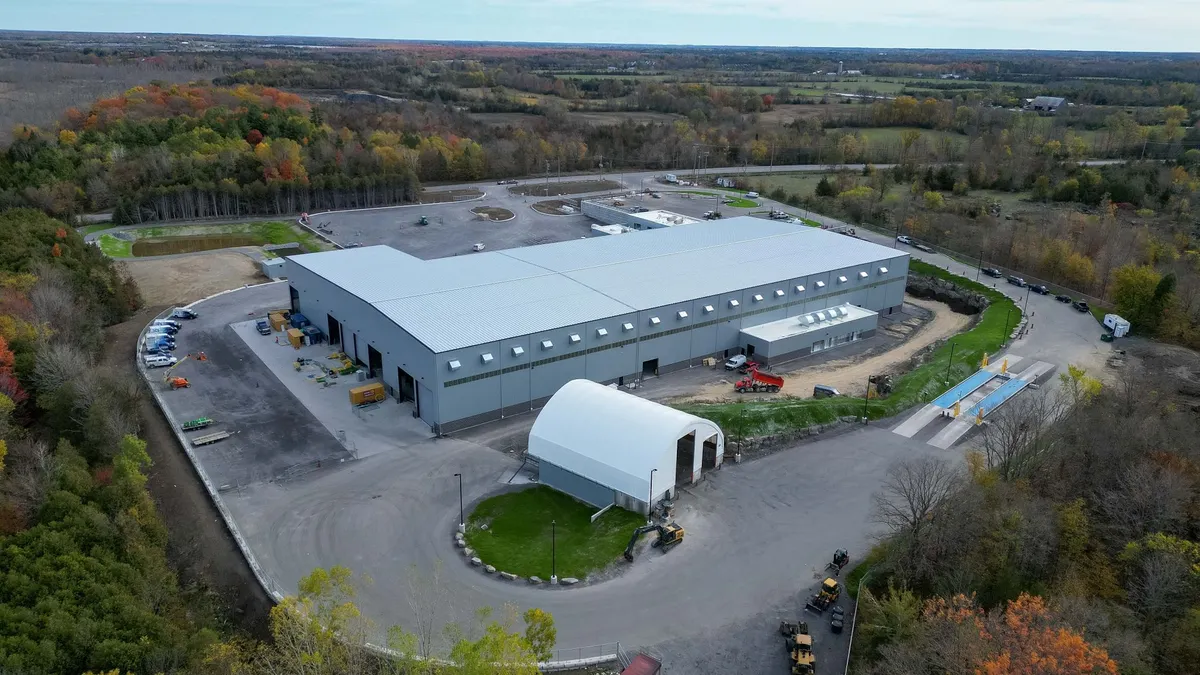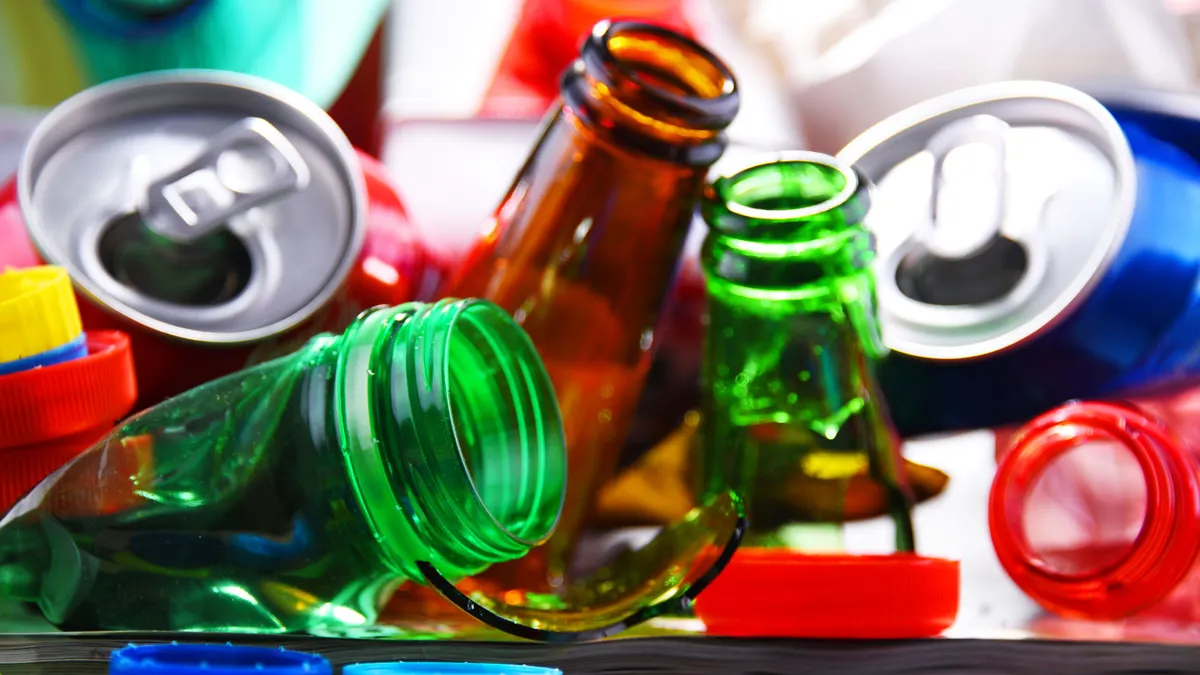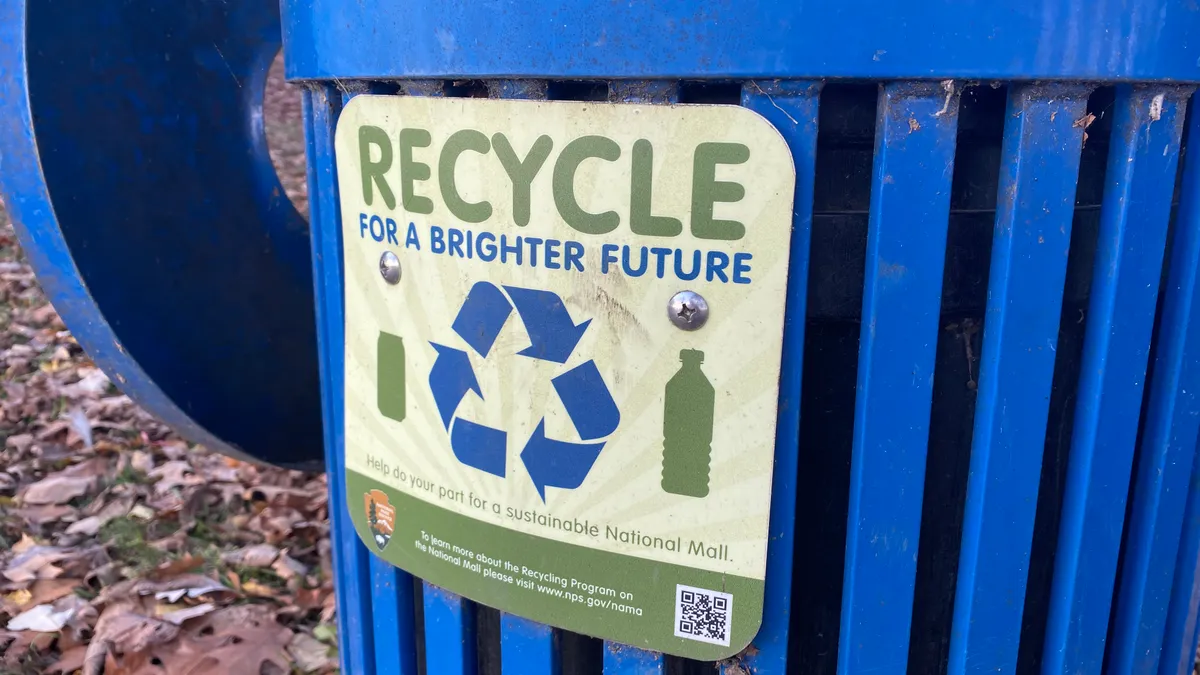The problems associated with apparel waste, intensified by fast fashion, have been piling up for years and gaining increased attention. A site in Chile’s Atacama Desert has become known for mountains of used apparel, and study after study shows the potential effects of plastic microfiber pollution on ecosystems and human health.
Many apparel brands now use polyester made from post-consumer PET bottles in an effort to improve the sector’s sustainability. But using waste PET as apparel feedstock is “not a perfect solution,” said Rachel Kibbe, CEO of the consultancy Circular Services Group. In 2022, along with resellers, fashion brands and other supply chain partners, Kibbe convened the American Circular Textiles group to advocate for new fashion policies.
“It has been a topic of importance in our industry for a while,” said Kibbe, referring to using bottles as textile feedstock. Textile suppliers and brands began labeling their products as recycled, which she said “made brands feel good at first.” But because textile-to-textile recycling technology is still in the early stages, this may risk confusing customers about how to manage their worn-out clothes and leaves landfill or incineration as the likely end-of-life option.
In the first 15 years of this century, the amount of apparel produced doubled while the amount of time consumers kept clothes in their wardrobes fell by 40%, according to 2017 data compiled by the World Bank. In recent years, apparel resellers have found profitable ways to extend apparel lifecycles. But much of the industry’s wastefulness can’t be undone. U.S. EPA data shows that the amount of clothing and footwear in the MSW stream has grown from an estimated 6.47 million tons in 2000 to 11.9 million tons in 2015.
Because most fibers used in apparel are synthetic — led by polyester — the industry is highly reliant on fossil fuels for fiber production, according to industry group Textile Exchange.
Startups want to reverse that trend. With support from brands and climate-focused investors, they’re developing innovations that would make synthetic textile-to-textile recycling a reality. But questions remain around scaling the technology and how these innovations compare to virgin polyester in terms of energy and resource consumption.
Startups face technology, infrastructure hurdles
Mechanical methods are considered a non-starter for textile-to-textile recycling due to many technical barriers. Chief among these are dyes and coatings bound to the fibers, and the use of fiber blends (cotton and synthetic, or multiple synthetics) that can’t be easily separated. In response, startups are developing technologies that fit under the broad umbrella of chemical recycling, also known as advanced recycling.
For the packaging industry, chemical recycling dwells in somewhat of a regulatory gray area. And despite its rapid growth, the technology has raised the ire of many environmental groups. They say the plans for large chemical recycling plants built or supported by fossil fuel companies, which aim to convert mixed plastics into fuels or plastic monomers, can increase greenhouse gas emissions and release pollution that threatens frontline communities.
While those plants mostly use pyrolysis or gasification, the techniques used to manage textiles generally fall under the umbrella of depolymerization. So far, advocates and industry watchers have been less critical of this burgeoning field.
In a recent Ocean Conservancy media briefing on chemical recycling, Lynn Hoffman — national coordinator for the Alliance of Mission-Based Recyclers and co-president of Eureka Recycling — stressed that reuse is far preferred over recycling textiles. But she said that chemical recycling of textiles “seems like an important arena to be focusing innovation, because there are not a lot of solutions now.”
Synthetic textile recycling startups including Worn Again Technologies and Circ have seen strong interest among investors. Funders include apparel brands such as H&M and Patagonia, as well as climate-focused investors like Breakthrough Energy Ventures. Another startup, Ambercycle, recently announced a $74 million, three-year deal to sell material to Inditex (the parent company of Zara). Ambercycle’s proprietary material, called “cycora,” is made from industrial and postconsumer polyester waste. The funding will also help finance the startup’s first commercial-scale production facility.
But it’s a new initiative out of a 100-year-old American chemical company, Eastman, that is generating perhaps the most buzz from textile and recycling professionals. The company’s polyester textile recycling plans involve a process called methanolysis. Eastman is building a plant in Kingsport, Tennessee, with potential capacity for 100,000 metric tons of PET. It plans to sell into both the packaging and textile markets.
Scaling these nascent technologies will present challenges related to efficient collection, contamination in the waste stream, and the mix of materials and trims that apparel uses. The full climate benefits of textile recycling will also need to be quantified.
Eastman recently commissioned a lifecycle analysis, performed by Quantis and reviewed by a third party, that shows it can potentially lower the greenhouse gas emissions of dimethyl terephthalate (a polyester feedstock) by a third over conventional fossil fuel manufacturing.
What about the bottle-to-textile value chain?
Mechanical PET recycling has allowed many brands to integrate postconsumer recycled content into their products for many years and it’s one of the most recycled plastics. Kibbe believes that if textile-to-textile recycling scales, it will allow more bottles to remain in the packaging sector. At the same time, in North and Central America, the amount of rPET used in textiles is trending downward.
Fiber used to account for the largest share of rPET, reaching 46.5% in 2017, according to data provided by the trade group NAPCOR. That amount began falling in 2020, while the share of rPET going into bottles grew to more than 40%.
Carpeting is the biggest end-use of rPET in textiles, according to NAPCOR Program Director Alasdair Carmichael. There are no clearly defined figures, he said, but industry estimates are that between 13-18% of rPET fibers are used in apparel production in North and Central America. Globally, data from Textile Exchange found that in 2019, only around 14% of the polyester fiber used in the apparel industry was rPET.
Adam Gendell, director of system optimization at The Recycling Partnership, said anecdotally that the falling amount of rPET going toward textiles is likely related to the building industry, not apparel.
“Building in general has been down since the pandemic and carpet is generally falling out of favor as a preferred flooring material,” he said.
Gendell said that bottling might start consuming a bigger share of mechanically-recycled rPET as packaging companies work to meet mandates and goals, but he also thinks the industry will look to chemical recycling — especially for food-grade packaging.
“We can see this world in which some plastic packaging goes to pyrolysis, and then the PET goes to depolymerization,” said Gendell.
It’s too soon to know whether the apparel industry will pick up some of the flagging demand for mechanically-recycled rPET from other textile producers, or how much this rPET demand from consumer packaged goods companies might grow to meet recycled content goals.
Eastman plans to sell rPET from its methanolysis process (which it calls polyester renewal technology) to a range of end users. While apparel is among the PET feedstocks it will accept, Eastman has not announced any supply partnerships with apparel brands to date. It has inked deals with multiple food and beauty product manufacturers.
The chief concern of organizations such as American Circular Textiles Group and Textile Exchange is to support apparel makers in reducing their environmental impact. Textile Exchange’s goal is to help the industry achieve a 45% reduction in the greenhouse gas emissions that come from producing fibers and raw materials by 2030. As part of that, it wants all synthetic fiber replaced with recycled synthetic fiber. The group has set an industry challenge to more than triple amount of recycled polyester used in apparel to 45% by 2025.
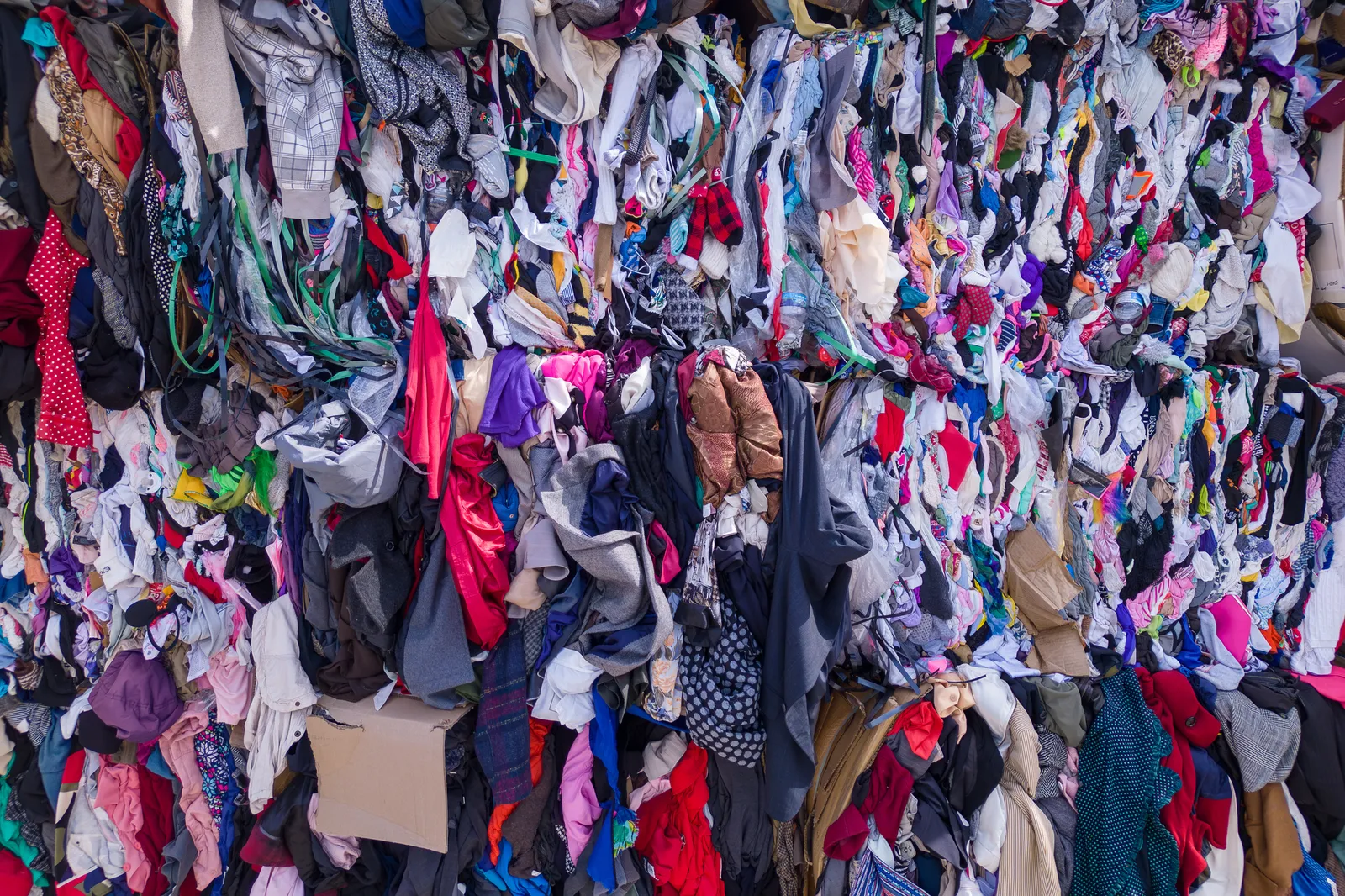
Fashion fiber’s future
Apparel brands have stood up sustainability initiatives, take-back programs, and partnerships aimed at reuse and repair, but Kibbe feels that overall textile recycling isn’t getting the type of support that other technologies are getting.
“The argument against circularity overall, is that it's just a marketing ploy” and perceived as greenwashing, she said. But, “until there are incentives in the way that [government has] provided the electric vehicle and renewable energy industry, I think that will be true for most — especially mass market — brands.”
American Circular Textiles has been advocating for government agencies to consider textile pollution as they develop strategies to reduce plastic waste. It also wants the Federal Trade Commission to target textile-specific greenwashing in its Green Guide updates and to promote clear, accurate language around textile recycling. The group is also supporting policies that could encourage textile recycling through extended producer responsibility or related policies.
Additionally, it is watching policies that could potentially slow the development of chemical recycling and make EPR requirements for recycled polyester textiles harder to meet.
“If we are committing to recycling, we have to have advanced recycling here in the United States for clothing, otherwise, we're just going to export it somewhere else, and then it's someone else's problem,” said Kibbe.
Between textile manufacturing and recycling, of course, sits another growing part of the apparel supply chain: reuse. But the costs of collecting, sorting and connecting used apparel to secondary markets can be high.
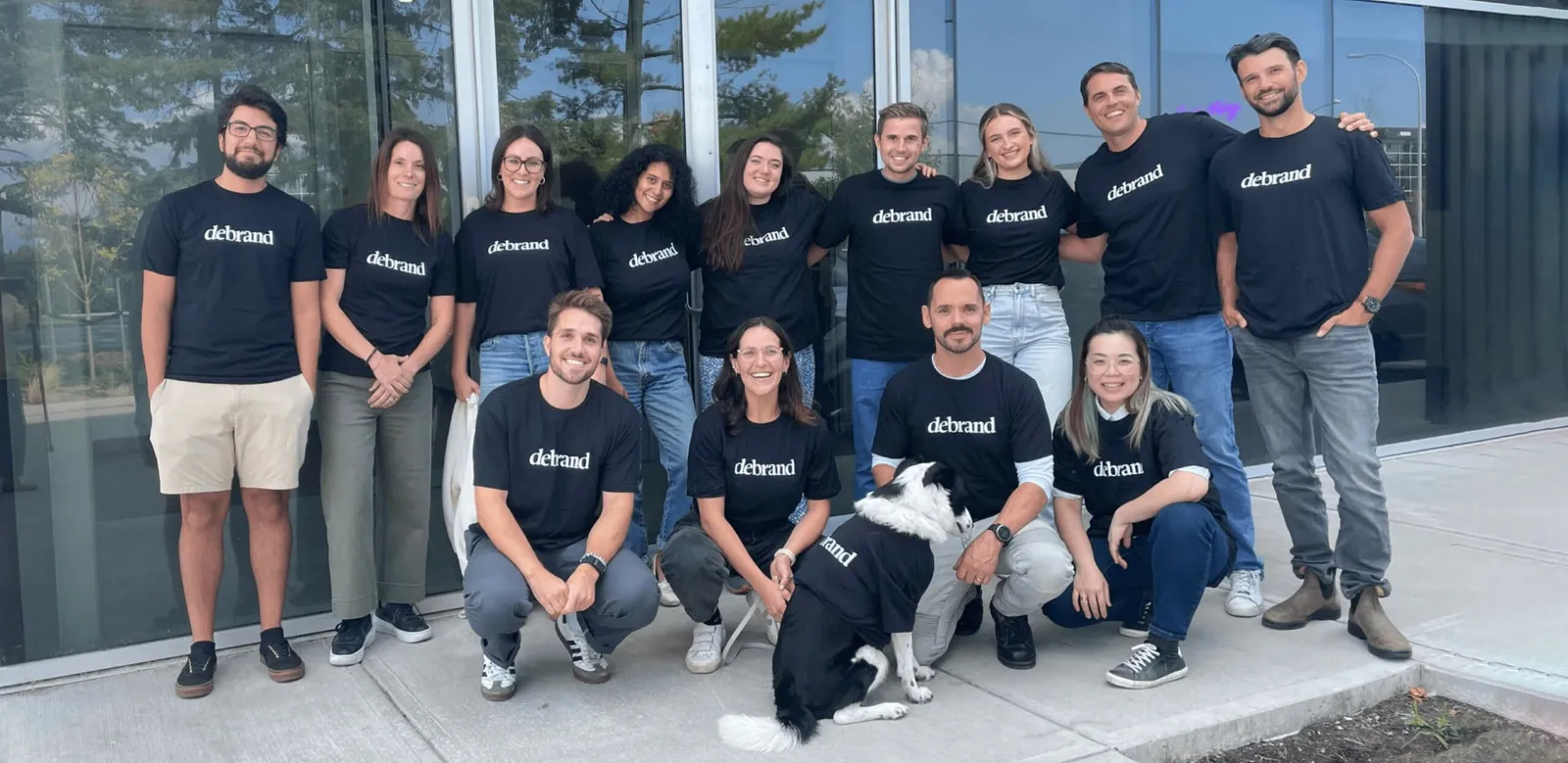
Canadian startup Debrand aims to change that by automating sorting, and connecting brands with resellers and recyclers. Last year, WM announced an unspecified “strategic investment” in Debrand — its first such move in the textile space — saying that Debrand had helped WM customers divert textiles from their waste streams.
Debrand CEO and co-founder Amelia Eleiter shared an update during October, the team’s first month working in its new sorting plant located near Vancouver.
“The point of this facility is really to be an automated, cutting-edge facility that can help to quickly identify a textile, what it's made of, its irritants, etc. And then using proprietary software, make a determination based on our market intelligence on where that should go next,” she said. Irritants can include zippers or other fasteners that must be removed, or dyes, finishes, or mixes of textile types that can complicate recycling.
Right now, Debrand is sending a small amount of polyester textile waste to a range of textile-to-textile recycling startups that are in the pilot stage. Eleiter thinks that some day this end-of-life textile waste will just be another material that industry haulers manage.
“Hopefully, eventually, we'll get to a point where we can have a textile bin in our homes, and that will go to textile recycling,” she said. “But it's going to be a while.”
Sign up for Waste Dive’s weekly Recycling newsletter here.

